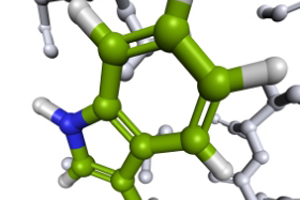Examining sulphur amino acids use in poultry production

More than 90 participants attended the 7th Advancia International Methionine Seminar organised by Adisseo, that took place prior to the ESPN WPSA, in Potsdam, Germany.
“We focused this Advancia 2013 on roles of sulphur amino acids beyond building blocks: from immunity to anti-oxidant potential, with a great panel of international scientific experts and nutritionists ” said Pierre-André Geraert, director innovation marketing, Adisseo. “This Advancia 2013 illustrated the importance of sulphur amino acids to support the immune response as well as to improve resistance to stressful conditions.”
Prof. Kirk Klasing, University of California, gave an overview of the role of sulphur amino acids in the maintenance and response of the immune system. During stress conditions, 70% of the growth depression can be explained by reduced feed intake, with the remaining 30% due to other factors – of which sulphur amino acids are the main contributors.
Prof. J. Buyse, Laboratory of Livestock Physiology, KU Leuven, Belgium explained the role of sulphur amino acids in oxidative stress, of laying hens and broilers, during heat stress or nutritional imbalances. Sulphur amino acids, methionine and cysteine, are deeply involved in antioxidant processes through taurine and glutathione synthesis. Experiments achieved with broilers under either controlled or heat stress conditions, demonstrated that dietary D,L-HMTBA could more readily prevent the growth depressing effect of heat exposure, than DL-methionine.
Dr Raquel Martin-Venegas, Facultat de Farmacia de Barcelona, Spain, demonstrated that methionine sources have an important role in protecting epithelial barrier function from oxidative stress and cytokine treatment, through the production of transsulphuration metabolites. Under H2O2 oxidative stress, D,L-HMTBA, because of an increased production of transulphuration metabolites (particularly taurine and reduced glutathione), provided for a more protective role on the epithelial barrier, than DL-methionine.
An overview of amino acids on meat quality was presented by Cecile Berri, Inra, France. Sulphur amino acids can positively affect poultry meat production, enhancing breast muscle deposition. Moreover, D,L-HMTBA appeared to improve meat stability, decreasing lipid oxidation during storage more so than methionine – further demonstrating the benefits of its transsulphuration into cysteine, taurine and glutathione.
Advancia was also the occasion to present the recent progresses performed by two laureates of the last Rhodimet Research Grants:
Dr Wei Zhai, Mississipi State University, USA, explained the mechanisms by which methionine influences breast muscle deposition in chickens. A recent trial using a low and a high methionine level in corn/SBM fed chickens demonstrated that enhancing the methionine level could up-regulate the citrate energy cycle while down-regulating the Ca uptake cycle. The results of these changes in gene or protein expression demonstrated that methionine increased protein deposition through sarcoplasmic hypertrophy and not myofibrillar hypertrophy. Such changes might also affect meat quality, which will need to be further studied.
Prof. Mike Persia, Iowa State University, presented broiler trials designed to determine the effects of methionine source on acute (6 h) and chronic (6 days) heat stress. Including a pair-fed group, he demonstrated that, as for immune response, the observed feed intake depression did not fully explain the growth depression. In this experiment, a 20% increase in dietary methionine was not sufficient to restore growth performance, irrespective of the methionine source, perhaps due to the very high heat stress (35°C) employed during the trial.
RoundTable discussions were led by the chairman, Dr Paul Tillman, and organized through four discussion groups focusing on each of the main topics : meat quality, gene expression, anti-oxidant benefits and requirements. The four groups brainstormed as to how to best use this information in practical feed formulation. While perhaps more questions were raised than solutions, it demonstrated the need to maintain and continue with research on the practical application of this important area of sulphur amino acid nutrition and biochemistry.













